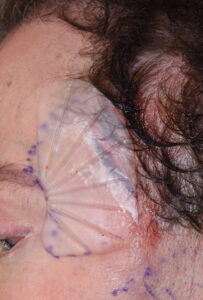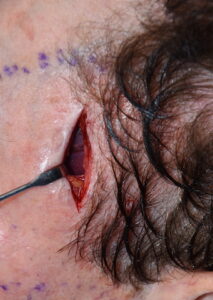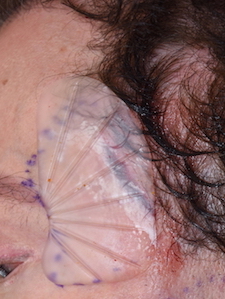Implants are the one assured permanent method for temporal augmentation. Besides guaranteed volume they also assure a smooth contour due to the outer contour of the implant. (assuming they are placed without inducing any folded edges)
In placing temporal implants they are three incisional locations that can be used. The most common method is the hidden retrotemporal hairline location in which the incision is placed behind the temporal hairline. The ‘scarless’ method is when the incision is placed at the superior postauricular sulcus (behind the ear) location which is also the greatest distance from the implantation site. The direct method, where the distance between the incision and the implant pocket is the closest, is right at the edge of the temporal hairline.


The only obvious negative to the direct approach is the hairline scar. This is not an issue at all in the patient who already has a hairline scar from a prior procedure. But in the scarless patient the decision to place use this approach must be considered carefully.
Dr Barry Eppley
Indianapolis, Indiana



